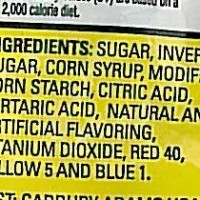
Ever read the nutritional labels on your food and wonder what exactly is ‘natural flavor’ and what does it come from? You may be shocked to learn the truth. Let’s start with the definition as stated in the U.S. Code of Federal Regulations (Title 21, Section 101, part 22):
“The term natural flavor or natural flavoring means the essential oil, oleoresin, essence or extractive, protein hydrolysate, distillate, or any product of roasting, heating or enzymolysis, which contains the flavoring constituents derived from a spice, fruit or fruit juice, vegetable or vegetable juice, edible yeast, herb, bark, bud, root, leaf or similar plant material, meat, seafood, poultry, eggs, dairy products, or fermentation products thereof, whose significant function in food is flavoring rather than nutritional”.
If you’re vegan then you may actually be consuming animal byproducts in your ‘natural flavoring’. So natural flavoring is made by scientists and can be a combination of natural or synthetic chemicals…yummy, sign me up! At the least, it may be really gross where this ‘natural flavoring’ is from and it may cause some unwanted side effects.
Here’s some ‘gross’ natural flavoring:
- Castoreum, the chemical derived from a gland from a beaver and located extremely close to the beaver’s anus. Where is this popular ‘natural flavoring’ found in? Common foods that contain raspberry, strawberry and vanilla flavoring, ice cream, soda, alcoholic beverages, gelatins, soft candy, chewing gum, and yogurt.
- Red Coloring #4 is made from the lovely cochina beetle and are dried, ground up, processed. They are added to foods to have a red coloring or added to food that lost its red coloring during processing.
- Hydrolyzed Protein is a protein that’s soaked in synthetic stomach-like acid. There’s a convenient loophole with this protein as companies can actually put MSG into food without having to label it. Isn’t that convenient?
- What about lanolin? It’s from secretions of sheep and makes your chewing gum nice and bouncy and chewy.
- If bread products contain l-cysteine then it could be from duck feathers or human hair then dissolved in acid and the l-cysteine gets isolated out to be added to bread.
How convenient that food companies may not want it publicly known that their ingredient comes from crushed beetles or beaver glands so they can just use ‘natural flavor’ on the label. The only way to truly know what is contained in processed food products is to call the company. If the ingredient is part of their proprietary flavor then they do not have to tell you but you can at least ask if it’s synthetic, natural, animal or plant based. Rather than get all crazed or obsessed about it, just avoid purchasing a lot of packaged, processed foods and for the ones you really love to consume then call the company and inquire.
It’s easier to be in denial and not care what you consume. That’s your decision but I’m not willing to turn over my health to these companies as they do not have our health interest in mind when they are concocting these flavorings. Many companies hire chemists to create a natural flavoring that screams for you to eat more and become addicted to their food products. Don’t believe me, try eating one Doritos chip and then close the bag or treat yourself to just one cookie and throw the rest out. There’s a reason they contain natural flavorings.
Be informed. Be educated. Be healthy.
Take Charge of your health by joining Total Wellness Monthly Membership today. This is a proven system that keeps you moving towards your optimal health goals with weekly videos and action items. Love for you to join the Community & gain access to the empowering information to positively impact your life. Are you worth it? I think YOU are 😉
Tags: chemicals, msg, natural flavor, toxins
Leave A Reply (No comments So Far)
No comments yet